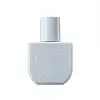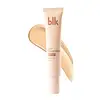What's inside
What's inside
 Key Ingredients
Key Ingredients

 Benefits
Benefits

 Concerns
Concerns

 Ingredients Side-by-side
Ingredients Side-by-side

Water
Skin ConditioningCyclopentasiloxane
EmollientTitanium Dioxide
Cosmetic ColorantEthylhexyl Methoxycinnamate
UV AbsorberCyclohexasiloxane
EmollientCetyl PEG/PPG-10/1 Dimethicone
EmulsifyingButylene Glycol
Humectant4-Methylbenzylidene Camphor
UV AbsorberDibutyl Adipate
EmollientMethyl Trimethicone
Skin ConditioningZinc Oxide
Cosmetic ColorantNiacinamide
SmoothingLauryl PEG-9 Polydimethylsiloxyethyl Dimethicone
Skin ConditioningTrimethylsiloxysilicate
Emollient1,2-Hexanediol
Skin ConditioningVp/Eicosene Copolymer
Bis-Ethylhexyloxyphenol Methoxyphenyl Triazine
Skin ConditioningSodium Chloride
MaskingMica
Cosmetic ColorantSilica
AbrasiveCaprylic/Capric Glycerides
EmollientQuaternium-18 Hectorite
Hydroxyacetophenone
AntioxidantLauryl Polyglyceryl-3 Polydimethylsiloxyethyl Dimethicone
Skin ConditioningPalmitic Acid
EmollientAluminum Hydroxide
EmollientStearic Acid
CleansingTriethoxycaprylylsilane
Allantoin
Skin ConditioningParfum
MaskingAdenosine
Skin ConditioningDisodium EDTA
Xylitol
HumectantAloe Barbadensis Leaf Extract
EmollientPanthenol
Skin ConditioningMaltodextrin
AbsorbentTocopherol
AntioxidantVanilla Planifolia Fruit Extract
Skin ConditioningPhyllanthus Emblica Fruit Extract
HumectantJuniperus Communis Fruit Extract
PerfumingCI 77492
Cosmetic ColorantCI 77491
Cosmetic ColorantCI 77499
Cosmetic ColorantWater, Cyclopentasiloxane, Titanium Dioxide, Ethylhexyl Methoxycinnamate, Cyclohexasiloxane, Cetyl PEG/PPG-10/1 Dimethicone, Butylene Glycol, 4-Methylbenzylidene Camphor, Dibutyl Adipate, Methyl Trimethicone, Zinc Oxide, Niacinamide, Lauryl PEG-9 Polydimethylsiloxyethyl Dimethicone, Trimethylsiloxysilicate, 1,2-Hexanediol, Vp/Eicosene Copolymer, Bis-Ethylhexyloxyphenol Methoxyphenyl Triazine, Sodium Chloride, Mica, Silica, Caprylic/Capric Glycerides, Quaternium-18 Hectorite, Hydroxyacetophenone, Lauryl Polyglyceryl-3 Polydimethylsiloxyethyl Dimethicone, Palmitic Acid, Aluminum Hydroxide, Stearic Acid, Triethoxycaprylylsilane, Allantoin, Parfum, Adenosine, Disodium EDTA, Xylitol, Aloe Barbadensis Leaf Extract, Panthenol, Maltodextrin, Tocopherol, Vanilla Planifolia Fruit Extract, Phyllanthus Emblica Fruit Extract, Juniperus Communis Fruit Extract, CI 77492, CI 77491, CI 77499
Water
Skin ConditioningCyclopentasiloxane
EmollientDimethicone
EmollientTitanium Dioxide
Cosmetic ColorantIsododecane
EmollientButylene Glycol
HumectantGlycerin
HumectantTrimethylsiloxysilicate
EmollientPEG-10 Dimethicone
Skin ConditioningCetyl PEG/PPG-10/1 Dimethicone
EmulsifyingDisteardimonium Hectorite
StabilisingHdi/Trimethylol Hexyllactone Crosspolymer
Sodium Chloride
MaskingEthylhexyl Methoxycinnamate
UV AbsorberButyl Methoxydibenzoylmethane
UV AbsorberSilica
AbrasivePolysilicone-11
Octocrylene
UV AbsorberCaprylyl Glycol
EmollientCarbomer
Emulsion StabilisingCetyl Phosphate
EmulsifyingSodium Hyaluronate
HumectantPhenoxyethanol
PreservativeAminomethyl Propanol
BufferingHexylene Glycol
EmulsifyingLecithin
EmollientZinc Oxide
Cosmetic ColorantLaureth-12
EmulsifyingCI 77891
Cosmetic ColorantCI 77492
Cosmetic ColorantCI 77491
Cosmetic ColorantCI 77499
Cosmetic ColorantWater, Cyclopentasiloxane, Dimethicone, Titanium Dioxide, Isododecane, Butylene Glycol, Glycerin, Trimethylsiloxysilicate, PEG-10 Dimethicone, Cetyl PEG/PPG-10/1 Dimethicone, Disteardimonium Hectorite, Hdi/Trimethylol Hexyllactone Crosspolymer, Sodium Chloride, Ethylhexyl Methoxycinnamate, Butyl Methoxydibenzoylmethane, Silica, Polysilicone-11, Octocrylene, Caprylyl Glycol, Carbomer, Cetyl Phosphate, Sodium Hyaluronate, Phenoxyethanol, Aminomethyl Propanol, Hexylene Glycol, Lecithin, Zinc Oxide, Laureth-12, CI 77891, CI 77492, CI 77491, CI 77499
Ingredients Explained
These ingredients are found in both products.
Ingredients higher up in an ingredient list are typically present in a larger amount.
Butylene Glycol (or BG) is used within cosmetic products for a few different reasons:
Overall, Butylene Glycol is a safe and well-rounded ingredient that works well with other ingredients.
Though this ingredient works well with most skin types, some people with sensitive skin may experience a reaction such as allergic rashes, closed comedones, or itchiness.
Learn more about Butylene GlycolThis ingredient is a high molecular weight silicone. It has emulsifying and skin conditioning properties.
Ci 77491 is also hydrated iron III oxide. It's sole purpose is to give a red/pink hue to products.
Iron III oxides are classified as inorganic chemicals for coloring.
Synthetically created Ci 77491 is considered safer than those naturally found. This is because the synthetically created version may contain less impurities. Iron oxides are generally non-toxic and non-allergenic.
Learn more about CI 77491Ci 77492 is also hydrated iron III oxide. It's sole purpose is to give a yellow hue to products.
Iron III oxides are classified as inorganic chemicals for coloring.
Synthetically created Ci 77492 is considered safer than those naturally found. This is because the synthetically created version may contain less impurities. Iron oxides are generally non-toxic and non-allergenic.
Learn more about CI 77492Ci 77499 is also hydrated iron III oxide. It is created from mixing red and black iron oxides. This helps give shades of darkness to a product.
Iron III oxides are classified as inorganic chemicals for coloring.
Cyclopentasiloxane, or D5, is a silicone used to improve texture of products and trap moisture.
D5 is considered lightweight and volatile. Volatile means it evaporates quickly after application. Once evaporated, D5 leaves a thin barrier that helps keep skin hydrated.
It is also an emollient. Emollients help soften the skin and prevent water loss. Silicones create a silky texture in products. D5 helps other ingredients become more spreadable.
Studies show D5 is safe to use in skincare products. We recommend speaking with a skincare professional if you have concerns.
Learn more about CyclopentasiloxaneEthylhexyl Methoxycinnamate is an organic compound that provides UVB protection. It often goes by the more common name of octinoxate. It is created from methoxycinnamic acid and 2-ethylhexanol.
Ethylhexyl Methoxycinnamate absorbs UVB rays with wavelengths between 280-320 nm. UV absorbers protect your skin by using chemical reactions to convert UV rays into heat and energy.
UVB (290-320 nm) rays emit more energy than UVA rays. They are capable of damaging DNA, causing sunburns and are thought to be linked to skin cancer.
The state of Hawaii has banned sunscreens containing octinoxate due to its potential impact on coral reefs. More research is needed to bridge gaps in this research. The European Union allows higher levels of octinoxate in sunscreens than the US and Australia.
Ethylhexyl Methoxycinnamate is oil soluble. It is not stable and may lose efficacy when exposed to sunlight.
Learn more about Ethylhexyl MethoxycinnamateSilica, also known as silicon dioxide, is a naturally occurring mineral. It is used as a fine, spherical, and porous powder in cosmetics.
Though it has exfoliant properties, the function of silica varies depending on the product.
The unique structure of silica enhances the spreadability and adds smoothness, making it a great texture enhancer.
It is also used as an active carrier, emulsifier, and mattifier due to its ability to absorb excess oil.
In some products, tiny microneedles called spicules are made from silica or hydrolyzed sponge. When you rub them in, they lightly polish away dead skin layers and enhance the penetration of active ingredients.
Learn more about SilicaChances are, you eat sodium chloride every day. Sodium Chloride is also known as table salt.
This ingredient has many purposes in skincare: thickener, emulsifier, and exfoliator.
You'll most likely find this ingredient in cleansers where it is used to create a gel-like texture. As an emulsifier, it also prevents ingredients from separating.
There is much debate on whether this ingredient is comedogenic. The short answer - comedogenic ratings don't tell the whole story. Learn more about comegodenic ratings here.
The concensus about this ingredient causing acne seems to be divided. Research is needed to understand if this ingredient does cause acne.
Scrubs may use salt as the primary exfoliating ingredient.
Learn more about Sodium ChlorideTitanium dioxide is a mineral UV filter widely used in sunscreens and cosmetics.
It is one of only two UV filters officially classified as “mineral” by regulatory agencies, the other being zinc oxide.
Titanium dioxide provides broad-spectrum protection mostly in the UVB and UVAII range, with some protection in the UVAI range.
While its UVA protection isn’t as strong as zinc oxide’s, the difference is minor.
A common myth is that mineral UV filters reflect UV light. However, modern research shows titanium dioxide absorbs UV radiation like chemical filters (~95% absorption & 5% reflection).
Thanks to its non-irritating nature, titanium dioxide is suitable for sensitive, acne-prone, or redness-prone skin. It is unlikely to cause "eye sting" like other sunscreen ingredients.
A major drawback of this ingredient is its white cast and thick texture. This is why mineral sunscreens often leave a white cast and are less cosmetically elegant than chemical/hybrid sunscreens.
To improve white cast and spreadability, micronized or nano-sized titanium dioxide is often used.
There are ongoing concerns surrounding nano-titanium oxide's impact on marine ecosystems.
There is no conclusive evidence that any form of titanium oxide (or any other sunscreen ingredients) will cause harm to marine ecosystems or coral reefs. The science is still developing but many consumers are keeping a close eye on this issue.
Please note, many destinations have reef-safety sunscreen rules. For instance, the U.S. Virgin Islands advises all visitors to use non-nano mineral sunscreens.
Nano mineral sunscreens once raised safety concerns about absorption into skin.
Extensive research has shown that they do not penetrate healthy or damaged skin; they remain safely on the surface and the top layer of dead skin (stratum corneum).
You'll likely find titanium dioxide bundled with alumina, silica, or dimethicone. These ingredients help make titanium dioxide highly photostable; this prevents it from interacting with other formula components under UV light.
Learn more about Titanium DioxideThis silicone is an emollient. Emollients create a thin film on the skin to prevent moisture from escaping.
It is not soluble in water and helps increase water-resistance in products.
According to a manufacturer, it can blend seamlessly with silicone oils, such as Cyclopentasiloxane.
Learn more about TrimethylsiloxysilicateWater. It's the most common cosmetic ingredient of all. You'll usually see it at the top of ingredient lists, meaning that it makes up the largest part of the product.
So why is it so popular? Water most often acts as a solvent - this means that it helps dissolve other ingredients into the formulation.
You'll also recognize water as that liquid we all need to stay alive. If you see this, drink a glass of water. Stay hydrated!
Learn more about WaterZinc Oxide is a mineral broad-spectrum UV filter; it is the broadest UVA and UVB reflector approved by the FDA. It also has skin protectant and skin soothing properties.
Zinc oxide is one of the most effective broad-spectrum UV filters. It protects against UVB, UVAII, and UVAI. In comparison to its counterpart titanium dioxide, zinc oxide provides uniform and extended UVA protection.
Another great benefit? This ingredient is highly photostable so it won't degrade easily under sunlight.
A common myth is that mineral UV filters are widely believed to primarily reflect UV light.
However, modern research shows titanium dioxide absorbs UV radiation like chemical filters (~95% absorption & 5% reflection).
Zinc oxide has great skin soothing properties so you'll likely find this in sunscreens formulated for sensitive skin or babies/children. It is unlikely to cause "eye sting" like other sunscreen ingredients.
Regulatory agencies consider zinc oxide to be non-toxic and safe. It has also been shown to not penetrate the skin.
Unfortunately, this ingredient does leave a visible white cast. This is why mineral sunscreens are often less cosmetically elegant than chemical or hybrid ones.
In cosmetics, zinc oxide can be found in both non-nano and nano-sized forms. The nano version is used to reduce white cast and improve the texture of sunscreen formulas.
There are ongoing concerns surrounding nano-zinc oxide's impact on marine ecosystems and whether it can be absorbed into skin.
Regarding marine ecosystems and coral reefs, there is no conclusive evidence that any form of zinc oxide (or any other sunscreen ingredients) will cause harm. The science is still developing but many consumers are keeping a close eye on this issue.
Please note, many destinations have reef-safety sunscreen rules. For instance, the U.S. Virgin Islands advises all visitors to use non-nano mineral sunscreens.
There has also been some stir about whether micronized or nano zinc oxide has potential photoxicity and absorption through the skin/lungs.
An in-vitro (done in a test tube or petri dish) study demonstrated micronized zinc oxide to have potential phototoxicity. There's no need to fret; the EU Commission's Scientific Committee on Consumer Safety has stated, "The relevance of these findings needs to be clarified by appropriate investigations in vivo." Or in other words, further studies done on living organisms are needed to prove this.
Current research shows zinc oxide nanoparticles do not penetrate intact or sunburned skin. They either remain on the surface or in the outermost layer of dead skin (stratum corneum).
Zinc oxide is one of only two classified mineral UV filters with titanium dioxide being the other one.
Fun fact: Zinc has been used throughout history as an ingredient in paint and medicine. An Indian text from 500BC is believed to list zinc oxide as a salve for open wound. The Ancient Greek physician Dioscorides has also mentioned the use of zinc as an ointment in 1AD.
Learn more about Zinc Oxide